Abstract
1. The effects of severe arterial hypoxia on the blood flow in the portal vein, and in kidney, muscle and skin beds have been determined in normal unanaesthetized rabbits, in animals without functioning autonomic effectors, and in rabbits with section of the carotid sinus and aortic nerves.
2. The resting blood flows in the above regions were not significantly different in the three groups.
3. The susceptibilities of the various beds to the local dilator effects of arterial hypoxia (assessed from the responses of animals without functioning autonomic effectors) were markedly different; vasodilatation was by far the greatest in the portal bed, followed in order by the renal, skin and muscle beds.
4. Section of the carotid sinus and aortic nerves completely abolished reflex activity, and the pattern of peripheral blood flow changes was similar to that of animals without functioning autonomic effectors. The findings suggest that the arterial chemoreceptors are the primary afferent source of reflex control of the peripheral circulation in arterial hypoxia.
5. In normal animals with intact reflexes there was sustained vasoconstriction throughout the treatment period in the portal and renal bed. The net vasomotor effects in muscle and limb skin were small owing to the operation of a number of factors, which opposed the effects of reflexly increased sympathetic nerve activity.
Full text
PDF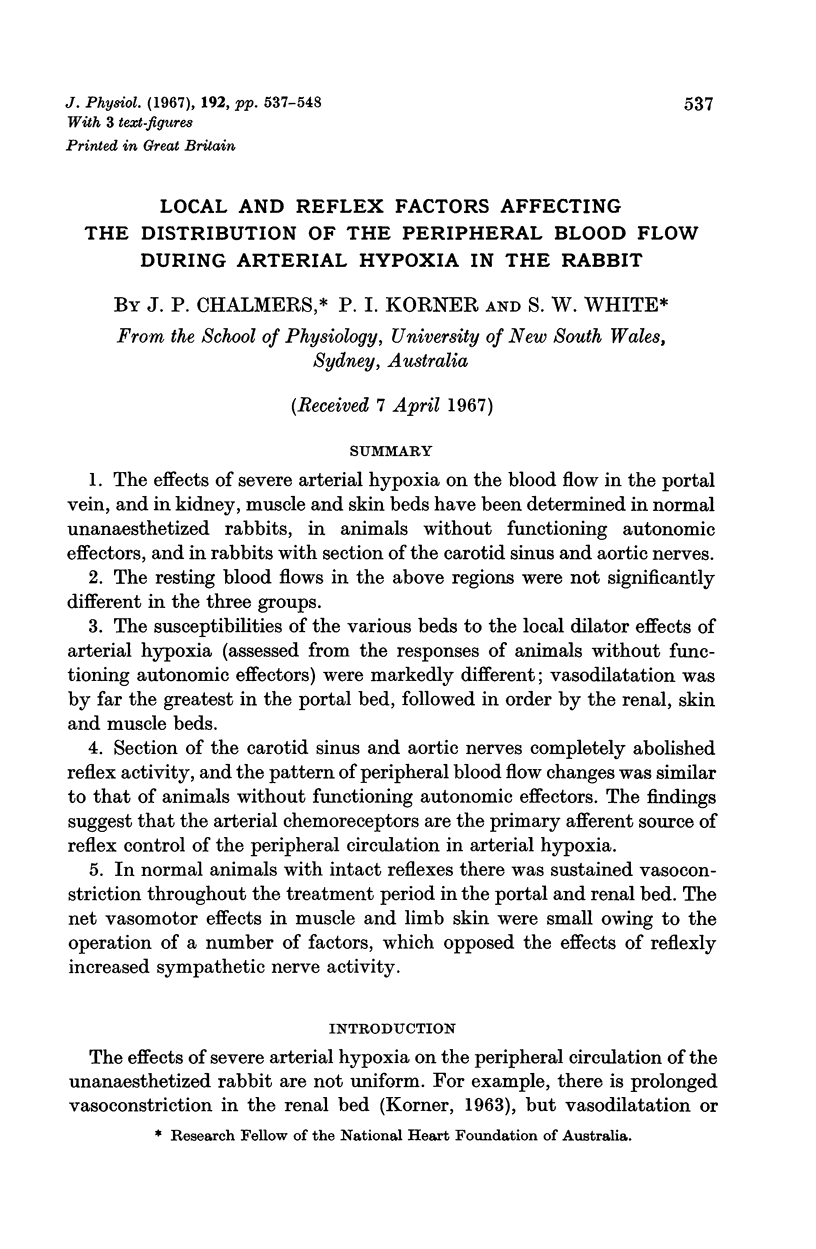

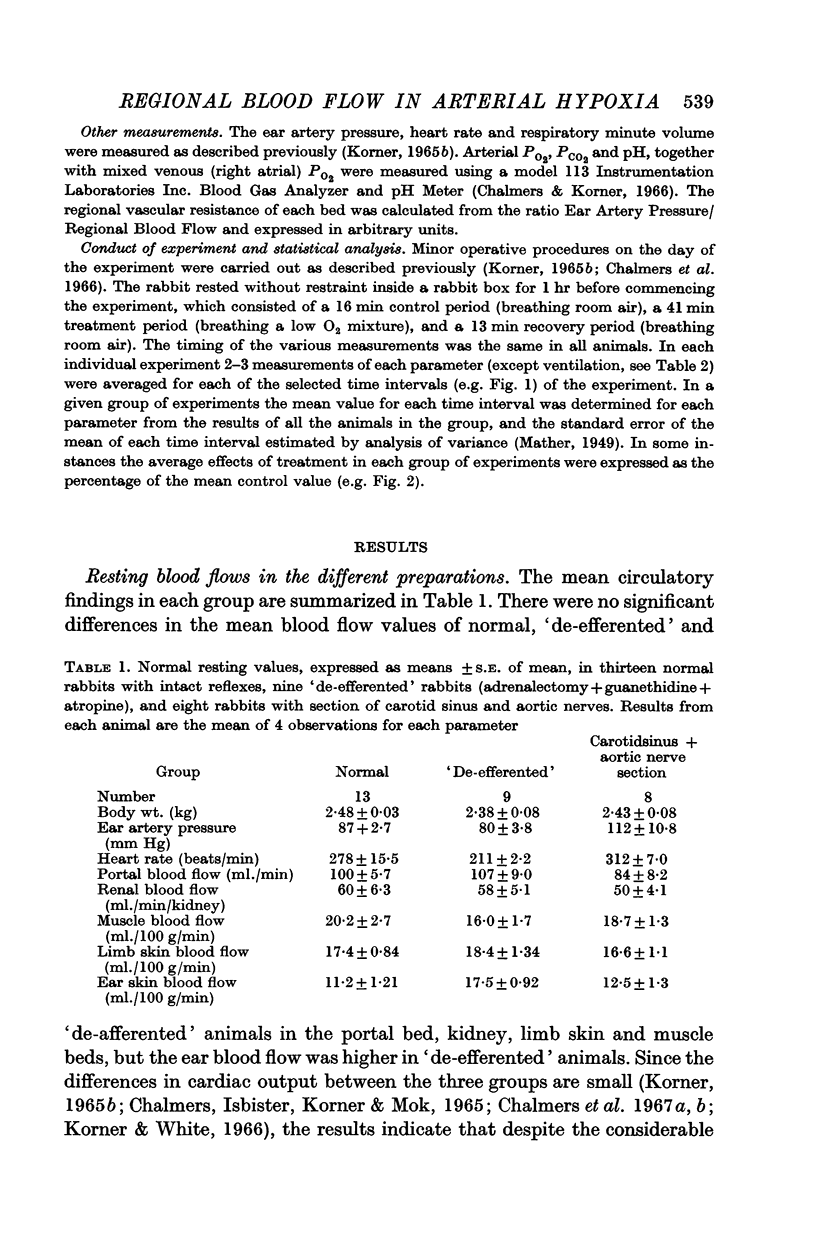
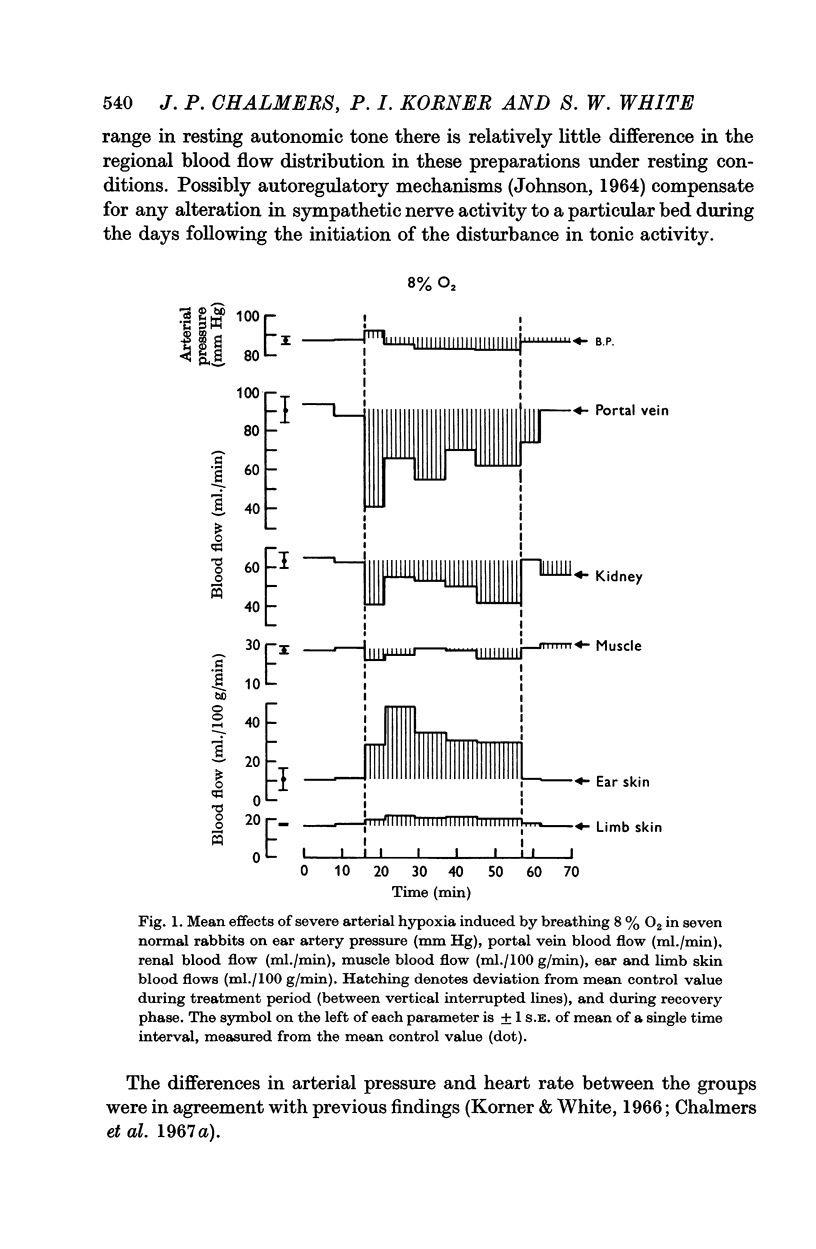
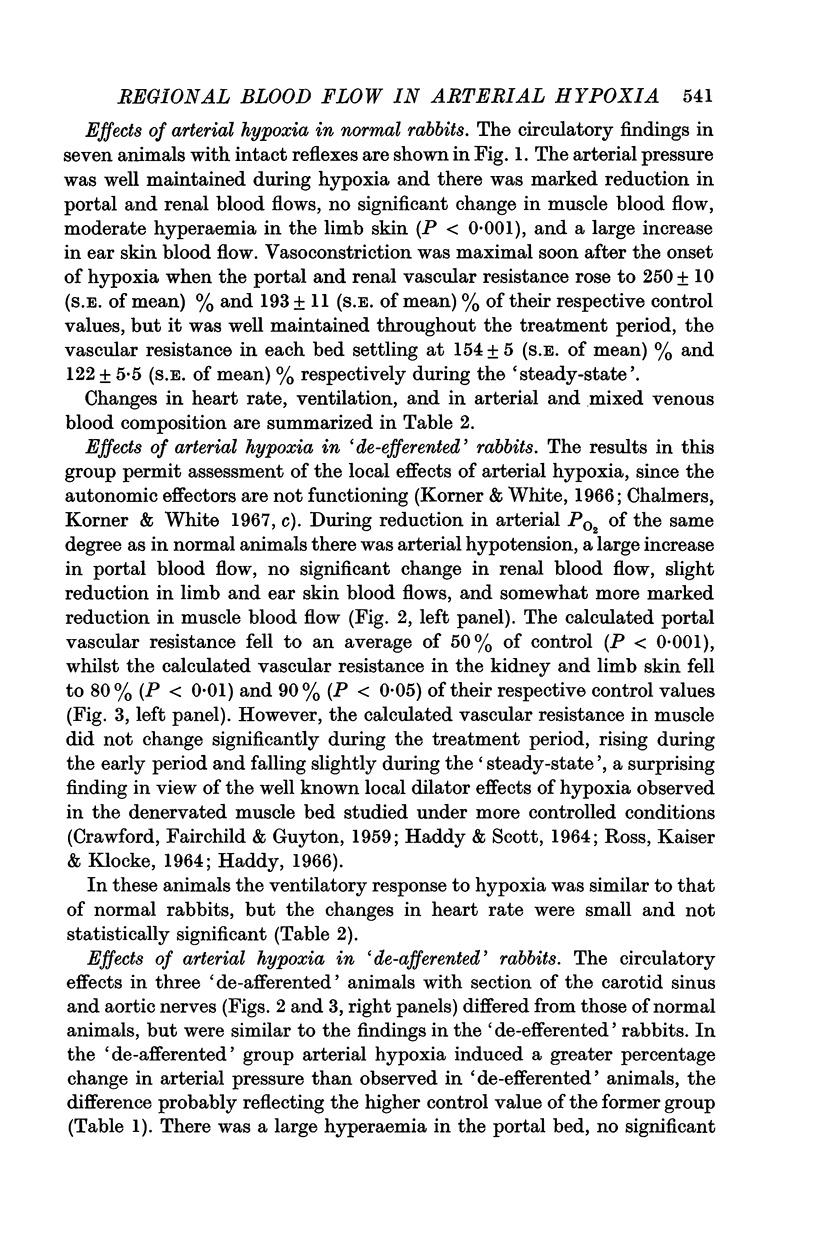

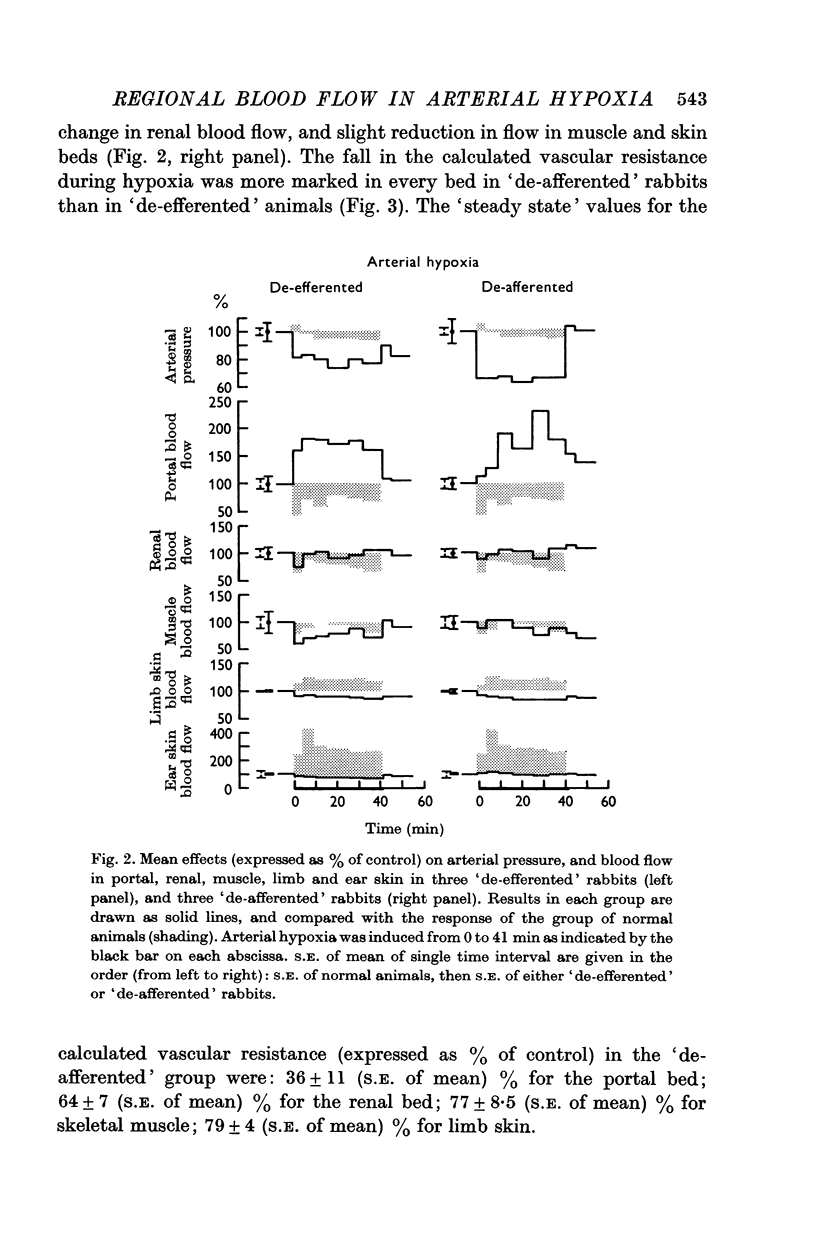
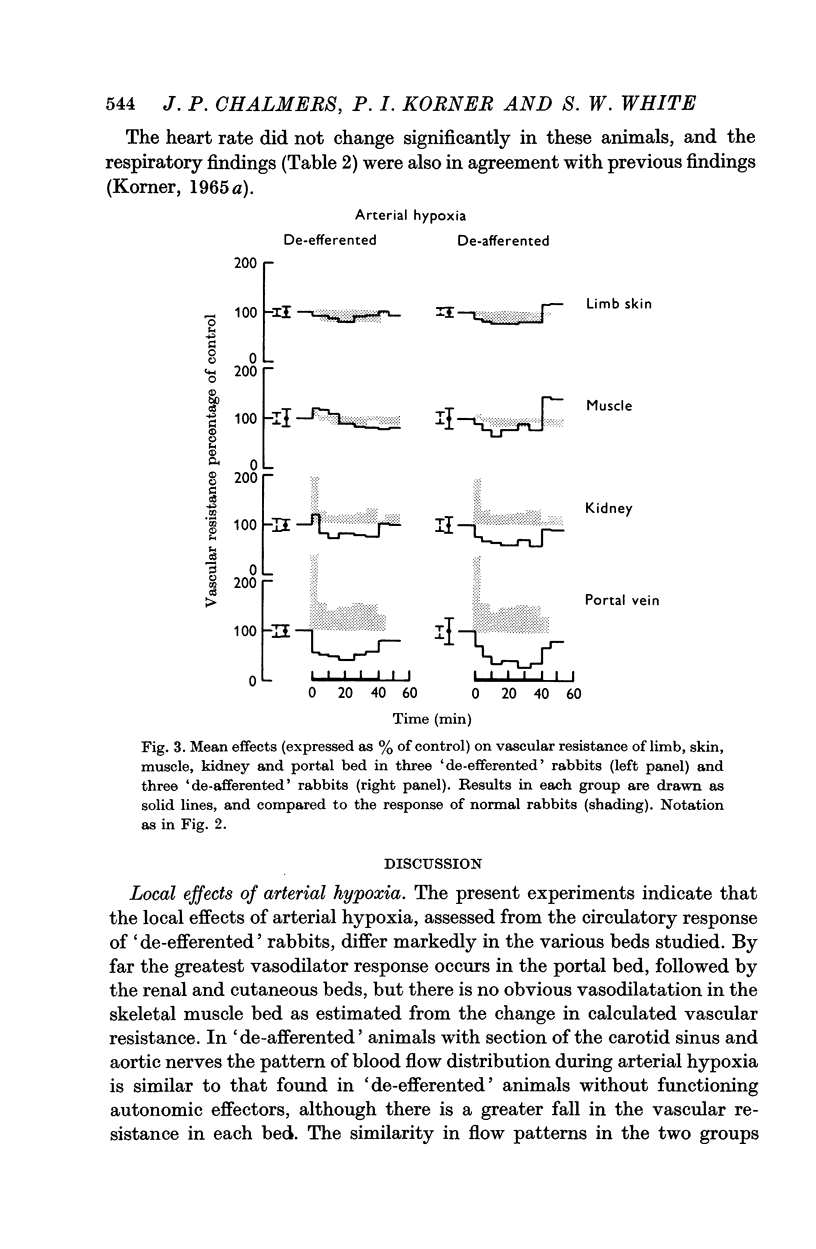

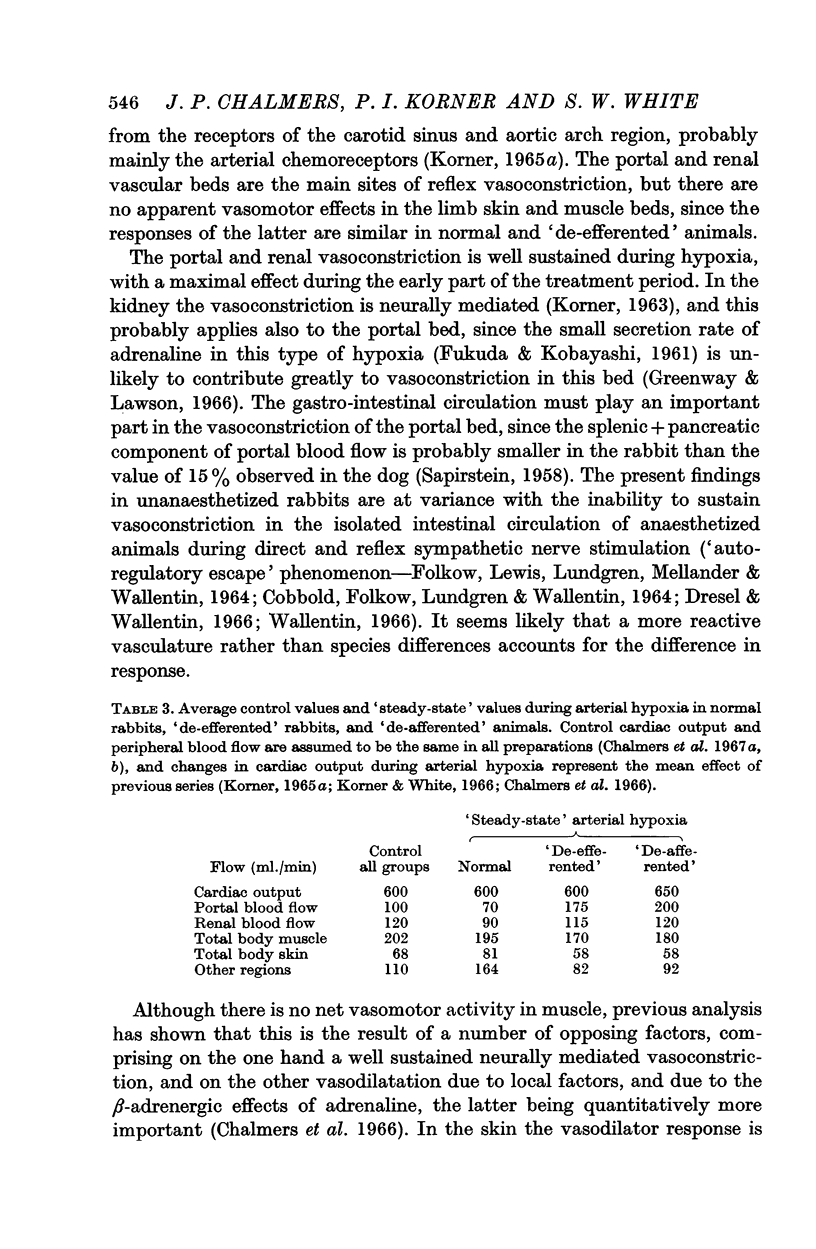
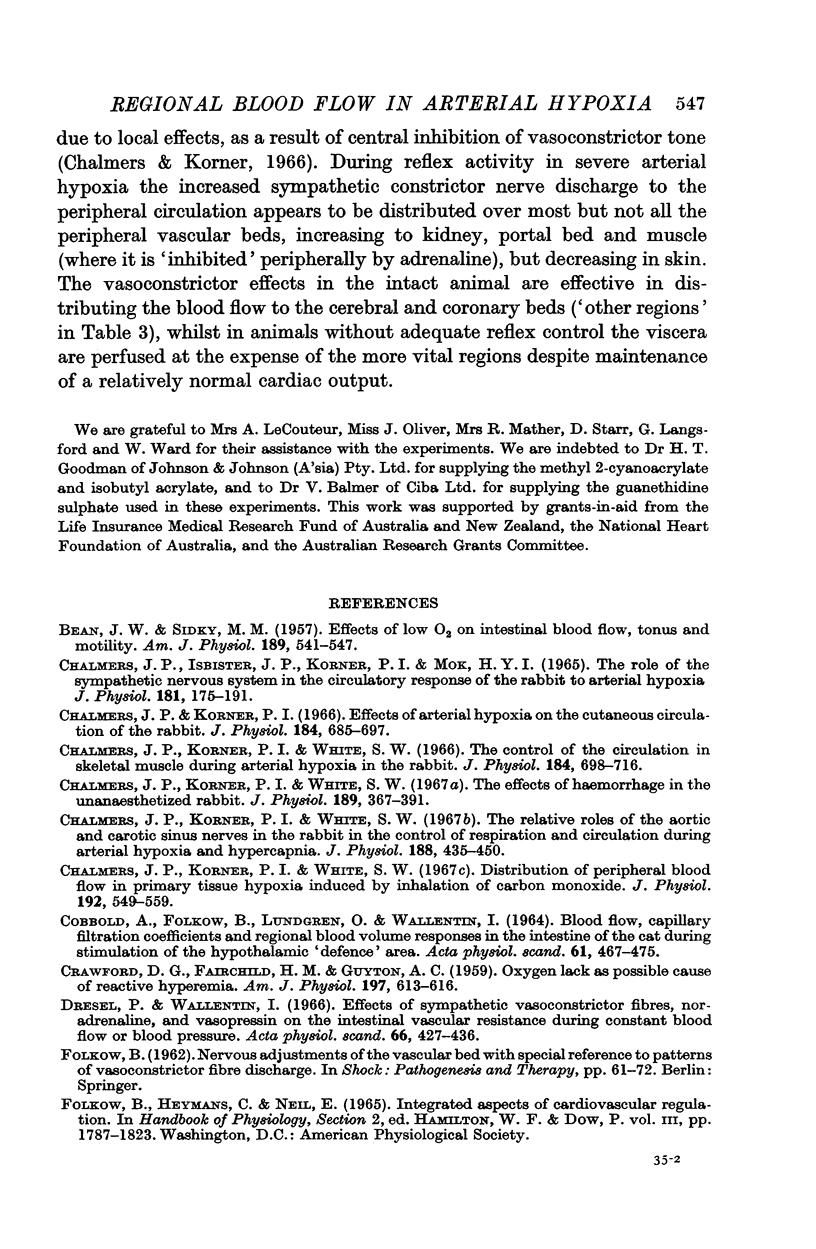
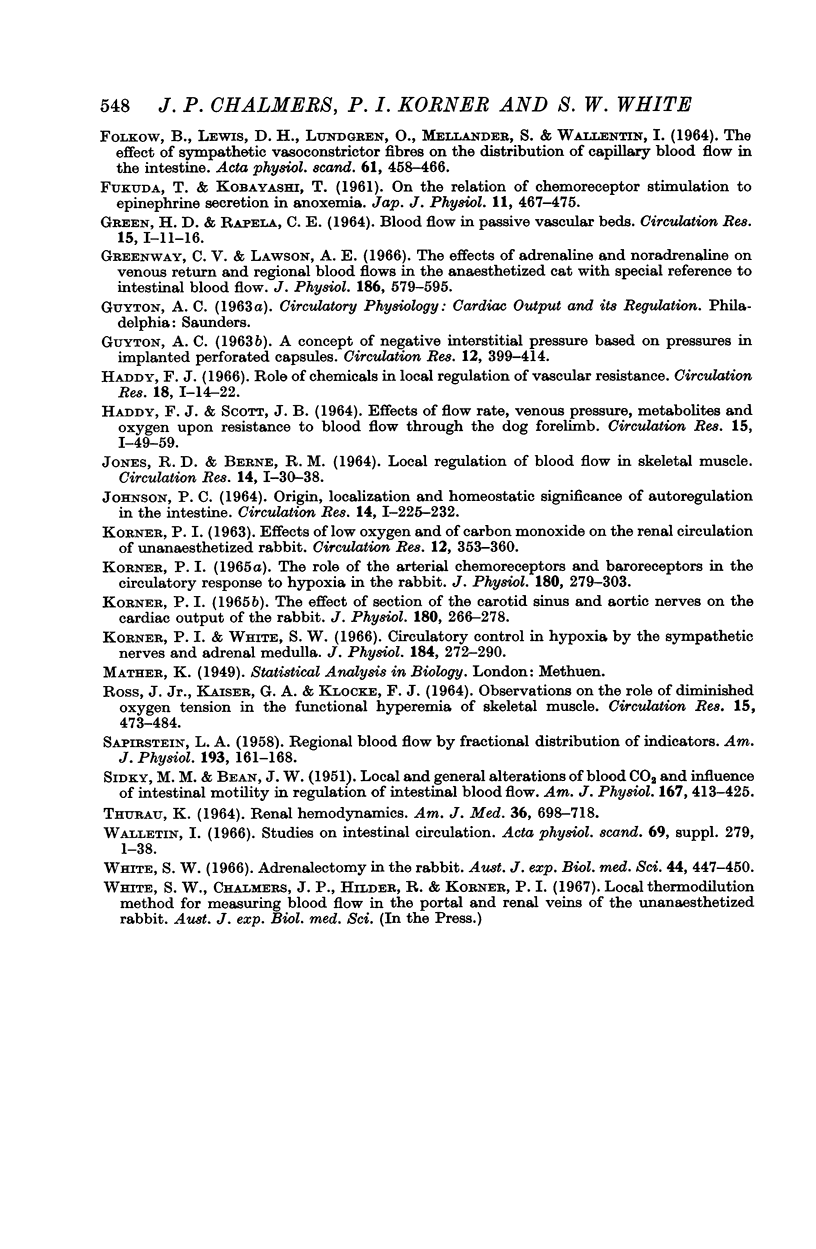
Selected References
These references are in PubMed. This may not be the complete list of references from this article.
- BEAN J. W., SIDKY M. M. Effects of low O2 on intestinal blood flow, tonus and motility. Am J Physiol. 1957 Jun;189(3):541–547. doi: 10.1152/ajplegacy.1957.189.3.541. [DOI] [PubMed] [Google Scholar]
- COBBOLD A., FOLKOW B., LUNDGREN O., WALLENTIN I. BLOOD FLOW, CAPILLARY FILTRATION COEFFICIENTS AND REGIONAL BLOOD VOLUME RESPONSES IN THE INTESTINE OF THE CAT DURING STIMULATION OF THE HYPOTHALAMIC 'DEFENCE' AREA. Acta Physiol Scand. 1964 Aug;61:467–475. [PubMed] [Google Scholar]
- CRAWFORD D. G., FAIRCHILD H. M., GUYTON A. C. Oxygen lack as a possible cause of reactive hyperemia. Am J Physiol. 1959 Sep;197:613–616. doi: 10.1152/ajplegacy.1959.197.3.613. [DOI] [PubMed] [Google Scholar]
- Chalmers J. P., Isbister J. P., Korner P. I., Mok H. Y. The role of the sympathetic nervous system in the circulatory response of the rabbit to arterial hypoxia. J Physiol. 1965 Nov;181(1):175–191. doi: 10.1113/jphysiol.1965.sp007753. [DOI] [PMC free article] [PubMed] [Google Scholar]
- Chalmers J. P., Korner P. I., White S. W. Distribution of peripheral blood flow in primary tissue hypoxia induced by inhalation of carbon monoxide. J Physiol. 1967 Sep;192(2):549–559. doi: 10.1113/jphysiol.1967.sp008316. [DOI] [PMC free article] [PubMed] [Google Scholar]
- Chalmers J. P., Korner P. I., White S. W. The control of the circulation in skeletal muscle during arterial hypoxia in the rabbit. J Physiol. 1966 Jun;184(3):698–716. doi: 10.1113/jphysiol.1966.sp007942. [DOI] [PMC free article] [PubMed] [Google Scholar]
- Chalmers J. P., Korner P. I., White S. W. The effects of haemorrhage in the unanaesthetized rabbit. J Physiol. 1967 Apr;189(3):367–391. doi: 10.1113/jphysiol.1967.sp008174. [DOI] [PMC free article] [PubMed] [Google Scholar]
- Chalmers J. P., Korner P. I., White S. W. The relative roles of the aortic and carotid sinus nerves in the rabbit in the control of respiration and circulation during arterial hypoxia and hypercapnia. J Physiol. 1967 Feb;188(3):435–450. doi: 10.1113/jphysiol.1967.sp008148. [DOI] [PMC free article] [PubMed] [Google Scholar]
- Dresel P., Wallentin I. Effects of sympathetic vasoconstrictor fibres, noradrenaline and vasopressin on the intestinal vascular resistance during constant blood flow or blood pressure. Acta Physiol Scand. 1966 Apr;66(4):427–436. doi: 10.1111/j.1748-1716.1966.tb03220.x. [DOI] [PubMed] [Google Scholar]
- FOLKOW B., LEWIS D. H., LUNDGREN O., MELLANDER S., WALLENTIN I. THE EFFECT OF THE SYMPATHETIC VASOCONSTRICTOR FIBRES ON THE DISTRIBUTION OF CAPILLARY BLOOD FLOW IN THE INTESTINE. Acta Physiol Scand. 1964 Aug;61:458–466. [PubMed] [Google Scholar]
- FUKUDA T., KORAYASHI T. On the relation of chemoreceptor stimulation to epinephrine secretion in anoxemia. Jpn J Physiol. 1961 Oct 15;11:467–475. doi: 10.2170/jjphysiol.11.467. [DOI] [PubMed] [Google Scholar]
- GUYTON A. C. A concept of negative interstitial pressure based on pressures in implanted perforated capsules. Circ Res. 1963 Apr;12:399–414. doi: 10.1161/01.res.12.4.399. [DOI] [PubMed] [Google Scholar]
- Greenway C. V., Lawson A. E. The effects of adrenaline and noradrenaline on venous return and regional blood flows in the anaesthetized cat with special reference to intestinal blood flow. J Physiol. 1966 Oct;186(3):579–595. doi: 10.1113/jphysiol.1966.sp008057. [DOI] [PMC free article] [PubMed] [Google Scholar]
- KORNER P. I. Renal blood flow, glomerular filtration rate, renal PAH extraction ratio, and the role of the renal vasomotor nerves in the unanesthetized rabbit. Circ Res. 1963 Apr;12:353–360. doi: 10.1161/01.res.12.4.353. [DOI] [PubMed] [Google Scholar]
- Korner P. I. The effect of section of the carotid sinus and aortic nerves on the cardiac output of the rabbit. J Physiol. 1965 Sep;180(2):266–278. doi: 10.1113/jphysiol.1965.sp007702. [DOI] [PMC free article] [PubMed] [Google Scholar]
- Korner P. I. The role of the arterial chemoreceptors and baroreceptors in the circulatory response to hypoxia of the rabbit. J Physiol. 1965 Sep;180(2):279–303. doi: 10.1113/jphysiol.1965.sp007703. [DOI] [PMC free article] [PubMed] [Google Scholar]
- Korner P. I., White S. W. Circulatory control in hypoxia by the sympathetic nerves and adrenal medulla. J Physiol. 1966 May;184(2):272–290. doi: 10.1113/jphysiol.1966.sp007915. [DOI] [PMC free article] [PubMed] [Google Scholar]
- MOHAMED M. S., BEAN J. W. Local and general alterations of blood CO2 and influence of intestinal motility in regulation of intestinal blood flow. Am J Physiol. 1951 Nov;167(2):413–425. doi: 10.1152/ajplegacy.1951.167.2.413. [DOI] [PubMed] [Google Scholar]
- ROSS J., Jr, KAISER G. A., KLOCKE F. J. OBSERVATIONS ON THE ROLE OF DIMINISHED OXYGEN TENSION IN THE FUNCTIONAL HYPEREMIA OF SKELETAL MUSCLE. Circ Res. 1964 Dec;15:473–484. doi: 10.1161/01.res.15.6.473. [DOI] [PubMed] [Google Scholar]
- SAPIRSTEIN L. A. Regional blood flow by fractional distribution of indicators. Am J Physiol. 1958 Apr;193(1):161–168. doi: 10.1152/ajplegacy.1958.193.1.161. [DOI] [PubMed] [Google Scholar]
- THURAU K. RENAL HEMODYNAMICS. Am J Med. 1964 May;36:698–719. doi: 10.1016/0002-9343(64)90181-0. [DOI] [PubMed] [Google Scholar]
- White S. W. Adrenalectomy in the rabbit. Aust J Exp Biol Med Sci. 1966 Aug;44(4):447–449. doi: 10.1038/icb.1966.41. [DOI] [PubMed] [Google Scholar]


